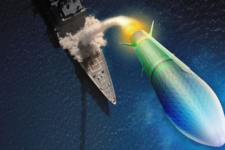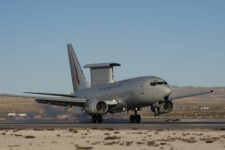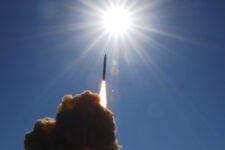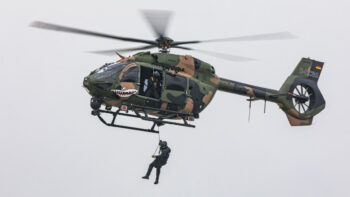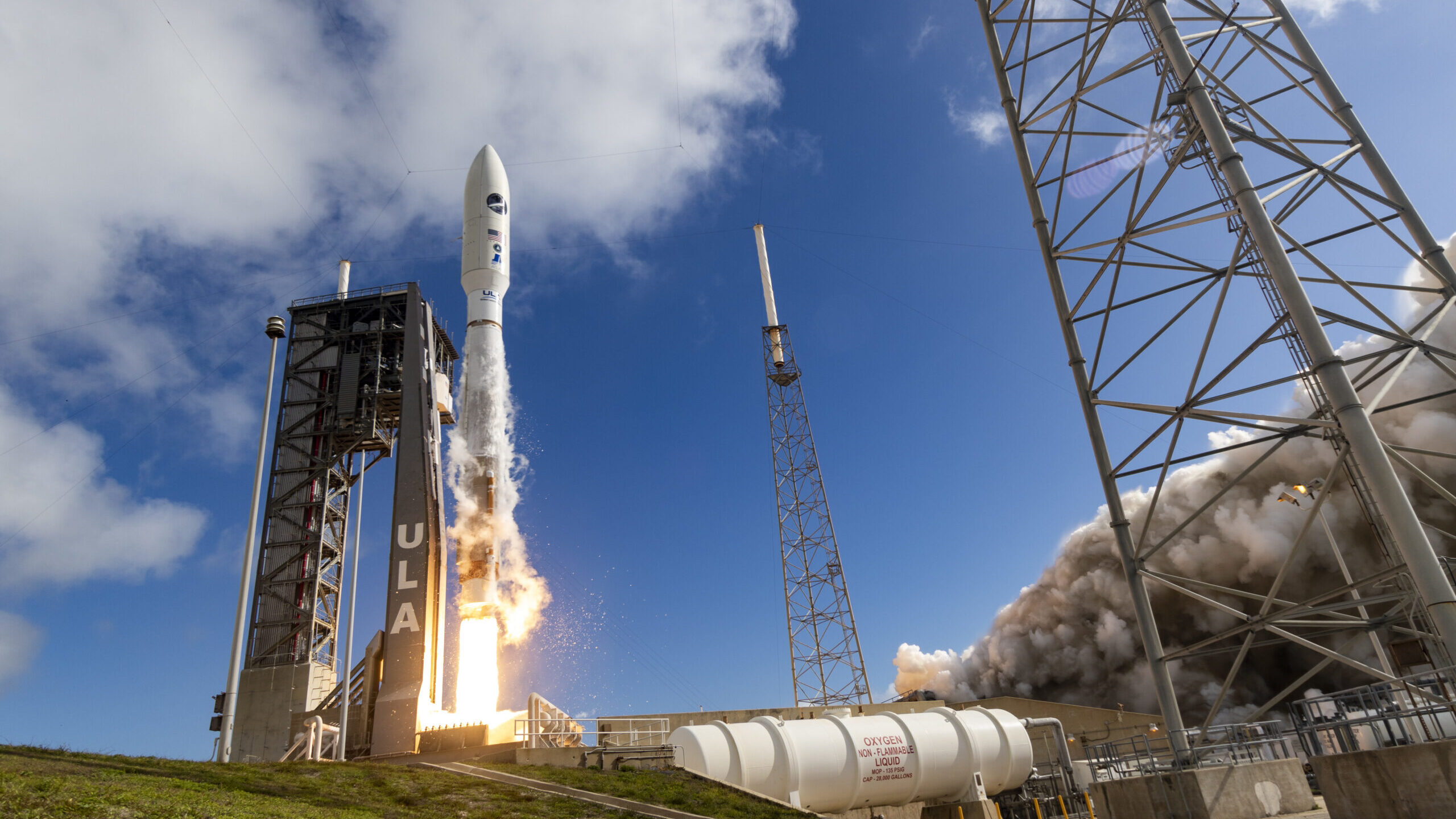
An Atlas V carrying the USSF-7 mission to space lifts off from Space Launch Complex-41 at Cape Canaveral Air Force Station, Florida, May 17. (United Launch Alliance via Space Force)
The Pentagon has emphasized that when it comes to fielding new systems, especially in the new space race for orbital dominance, speed is key. But in the op-ed below, former senior Pentagon space official Charles Beames says it’s time to put speed at the very top of the list — even, he says, above cost. (Disclaimer: Beames is executive chairman of satellite firm York Space Systems and co-founder of the SmallSat Alliance, whose members, including York, compete for Defense Department contracts.)
“My highest personal goal has been to instill a sense of urgency about our efforts,” Air Force Secretary Frank Kendall says when introducing his Operational Imperatives. He emphasizes the need to “improve our operational posture relative to our pacing challenge: China, China, China.”
The US Space Force’s first acquisition leader, Assistant Secretary Frank Calvelli, seems to agree – his nine tenets to transform government procurement are pointed in the same direction. Both space leaders see a need for urgency to wake up the moribund space budgeting and acquisition community that has grown unresponsive to emerging threats.
While the government should always protect taxpayer money jealously, it’s time for the government to prioritize speed, even above cost, to ensure the US has the space capabilities it needs to stay ahead of its adversaries.
The need for speed in space isn’t a new idea. It came with the birth of the first space race to put a person on the moon. Unfortunately, what soon followed, was a Federal Acquisition Regulation (FAR) tenet that has since grown obsolete known as Lowest Price Technically Acceptable (LPTA). Cynically described by even our earliest astronauts as “built by the lowest bidder,” this lowest-price mentality was put in place as a safeguard against the government getting fleeced – at a time when no real space companies existed to support a national need.
To win that space race, the government only had consumer-driven factories to leverage. Back then, there were no real space companies — they had to turn to companies like Ford and Eastman Kodak. To lure all these commercial companies, it took cost reimbursed or “cost plus” contracts with a guaranteed fee, all to begin creating the economic building blocks for a space industry and convince the non-aligned world that we would get to the Moon first.
Today’s space race is vastly different – there is already a thriving commercial space industry, complete with free market economics to organically determine the best technologies at the most competitive price. Today, there is little difference between commercial satellites already orbiting Earth today and those performing the most highly classified missions (often one or two unique sensing apertures and some specialty software). When we move from a “lowest price” to a “best schedule” to regulate federal acquisitions, then the Space Force and all other spacefaring agencies will acquire what is already commercially available and have what it needs to equip forces to the warfighting commands faster.
Congress, the Pentagon, and the space industry must refresh the tired 1950’s “built by the lowest bidder” mentality, something that was ironically always a misnomer anyways, given the cost overruns that were endemic in that era. Redefining FAR Part 15 to reflect an overall emphasis on processes and companies that reward and deliver to best schedule will reduce the country’s financial burden and casualties in future battlefields. Contracts should be awarded routinely and competitively to technically acceptable satellite solutions with the highest priority given to schedule, because our enemy won’t wait until we’re ready.
When Taiwan is threatened by the CCP and needs a satellite alternative to undersea cables for its internet, the Taiwanese people need it now, not in 10 years. Today, NASA and NOAA need enhanced satellites to measure and assist the rest of the world as we all adapt to a rapidly changing climate – not in 20-30 years, when many coastal areas will be under another foot of water. When the Space Force needs a new generation of satellites flying in lower orbits to detect hypersonic missiles aimed at the US and our allies, it needs it now, but can settle for 2026 – just a couple of years away. After that, we might as well be sitting ducks.
The need for speed is ubiquitous to every space mission across the US government, and it’s time that the Pentagon’s acquisition apparatus lead with an abrupt change in emphasis from “lowest cost” to “best schedule” and codify it in directives. Everyone from the secretary of defense, to the chief of space operations, to even the leader of the space acquisition community itself can see that speed is key, and firm fixed price contracts, awarded based on (still) technically acceptable and best schedule, will be critical to winning the race.
We no longer have the luxury of time to move into these orbits before China will, and competing in today’s space race foreshadows something very different. Our government must promote innovation in the fast-paced tech and commercial space sectors and leverage these capabilities now to ensure access to space for any free nation, or company thereof, to grow and explore.
Charles Beames is the executive chairman of York Space Systems, a former senior Department of Defense official and the co-founder of the SmallSat Alliance, an industry group representing 50 next-generation space companies. He is on Twitter at @ChuckBeames.








